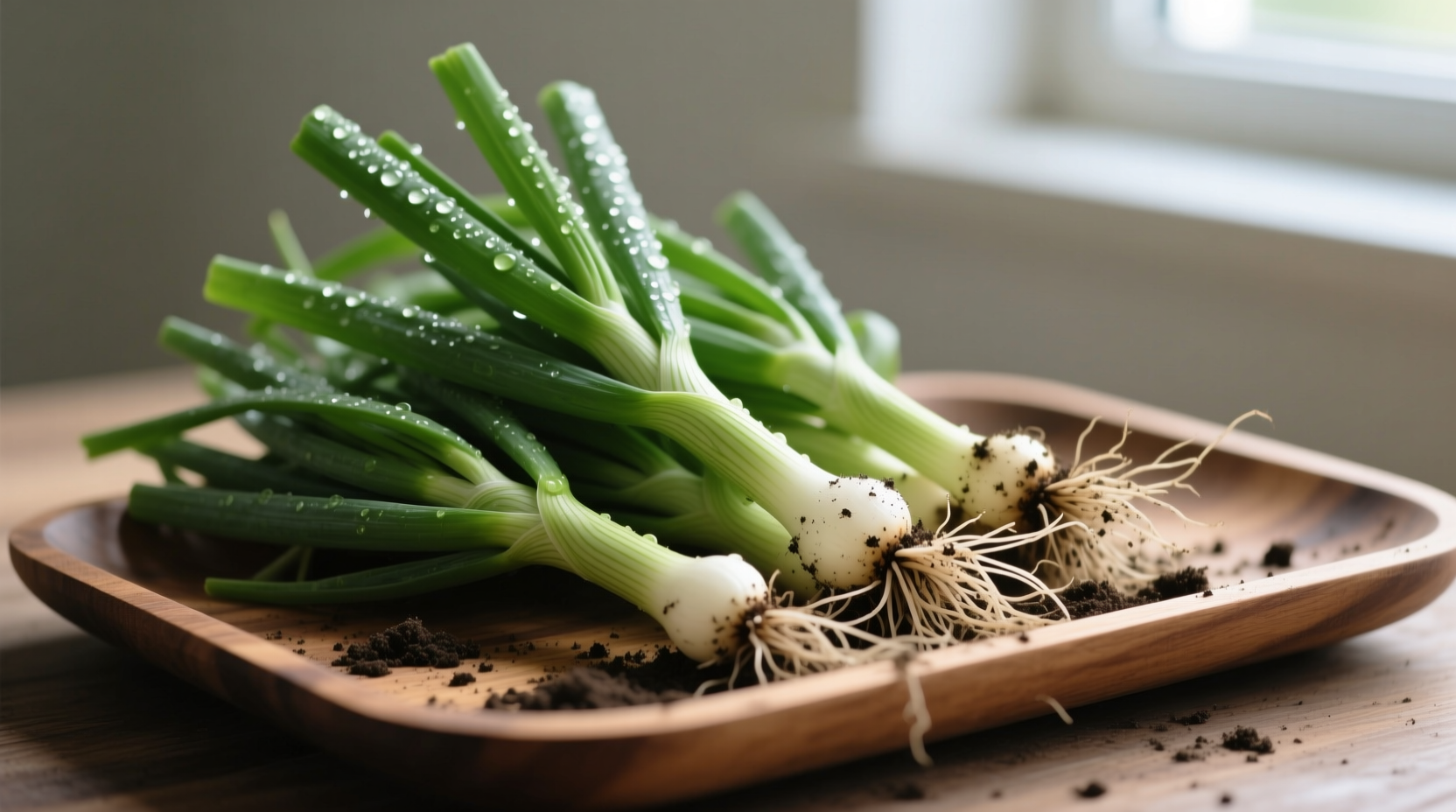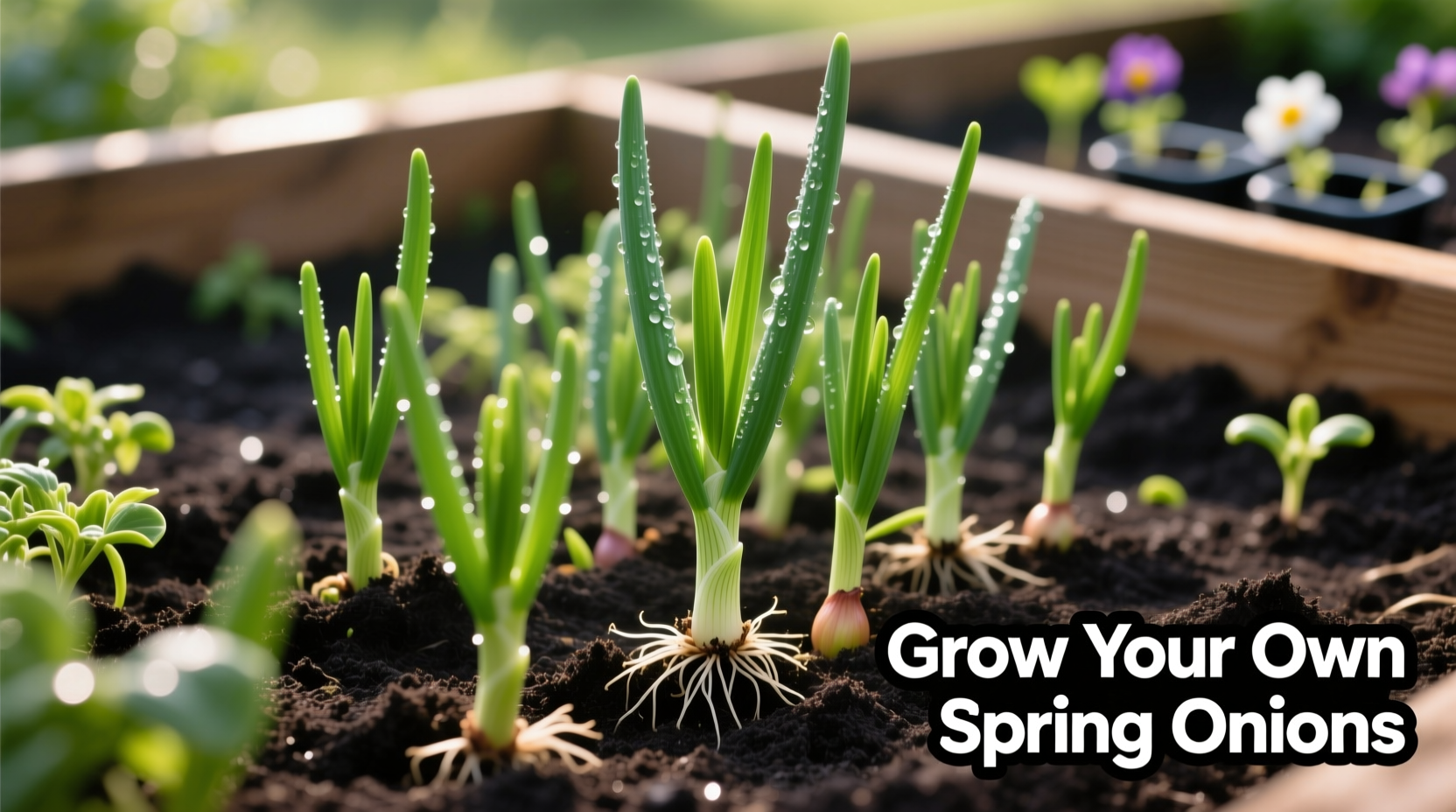Spring onions, also known as scallions or green onions, are one of the easiest vegetables to grow in home gardens. These versatile alliums mature quickly, require minimal space, and provide fresh flavor for salads, stir-fries, and garnishes. Unlike regular onions that form large bulbs, spring onions are harvested when their stalks are still slender and tender, typically 60-80 days after planting.
Planning Your Spring Onion Garden Success
Successful spring onion cultivation begins with proper planning. These cool-season crops thrive in temperatures between 55-75°F (13-24°C) and can be planted as soon as the soil can be worked in spring. For continuous harvest, plant new seeds every 2-3 weeks throughout the growing season.
Consider these key planning factors:
- Climate considerations: In warmer zones (7+), plant in fall for winter harvest; in cooler zones, focus on spring planting
- Variety selection: Choose appropriate types for your region (see comparison table below)
- Space requirements: Spring onions need just 2-4 inches between plants, making them perfect for small gardens or containers
| Variety | Days to Harvest | Best Climate | Special Characteristics |
|---|---|---|---|
| White Lisbon | 60-70 | Cool to moderate | Mild flavor, excellent for containers |
| Evergreen Hardy White | 70-80 | Cold-hardy | Withstands frost, regrows after cutting |
| Red Beard | 65-75 | Warm climates | Vibrant red stems, slightly stronger flavor |
| Ishikura Long | 75-85 | All climates | No bulb formation, ideal for continuous harvest |
According to the USDA Agricultural Research Service, spring onions perform best when planted in soil that has reached at least 50°F (10°C) at planting depth. This temperature threshold ensures proper germination and early root development.
Soil Preparation: The Foundation for Healthy Growth
Spring onions prefer well-draining soil rich in organic matter. Prepare your garden bed 1-2 weeks before planting by:
- Removing weeds and debris from the planting area
- Amending soil with 2-3 inches of compost or well-rotted manure
- Testing soil pH (ideal range is 6.0-7.5) and adjusting if necessary
- Loosening soil to a depth of 8-12 inches for optimal root penetration
For container growing, use a high-quality potting mix rather than garden soil. Containers should be at least 6 inches deep with adequate drainage holes. The University of Minnesota Extension recommends adding a balanced organic fertilizer at planting time to support continuous growth.

Planting Techniques for Maximum Yield
You can grow spring onions from seeds or sets (small bulbs). Each method has advantages:
From Seeds (Recommended for Continuous Harvest)
- Sow seeds ¼ inch deep, ½ inch apart in rows 12-18 inches apart
- Thin seedlings to 2-4 inches apart when they reach 2 inches tall
- Seeds germinate in 7-14 days depending on soil temperature
- Direct sow in garden or start indoors 4-6 weeks before last frost
From Sets (Faster Results)
- Plant sets 1-2 inches deep, 2-4 inches apart
- Point the narrow end up when planting
- Sets typically produce harvestable onions 30-45 days after planting
- Ideal for gardeners wanting quicker results
For succession planting, sow new seeds every 2-3 weeks throughout the growing season. This technique ensures you always have spring onions at various stages of maturity ready for harvest.
Growing Season Timeline: What to Expect Week by Week
Understanding the growth cycle helps you provide appropriate care at each stage:
- Weeks 1-2: Germination and early root development - keep soil consistently moist
- Weeks 3-4: First true leaves emerge - begin light fertilization
- Weeks 5-6: Rapid leaf growth - monitor for pests
- Weeks 7-8: Harvest begins - start cutting outer stalks
- Weeks 9-12: Peak harvest period - regular cutting encourages new growth
- Weeks 13+: Flowering begins - harvest remaining onions before bolting
Research from Oregon State University Extension shows that spring onions grown in consistent moisture conditions develop more uniform stalks and milder flavor compared to those experiencing drought stress.
Watering and Maintenance Essentials
Proper watering is critical for spring onion success. These shallow-rooted plants need consistent moisture but dislike waterlogged conditions.
Watering guidelines:
- Provide 1 inch of water per week (more during hot, dry periods)
- Water in the morning to reduce disease risk
- Mulch with 1-2 inches of straw to retain moisture
- Avoid overhead watering to prevent fungal diseases
Fertilization schedule:
- Apply balanced fertilizer (10-10-10) at planting time
- Side-dress with nitrogen-rich fertilizer when plants are 4-6 inches tall
- For continuous harvest, fertilize monthly throughout growing season
Harvesting at Peak Flavor and Texture
Spring onions are ready for harvest when the stalks reach ¼ to ½ inch in diameter and stand 6-8 inches tall. The ideal harvesting technique:
- Water the plants lightly the day before harvesting
- Use a garden fork to gently loosen soil around the plants
- Grasp the base of the stalks and pull upward with a gentle rocking motion
- Trim roots and any damaged outer layers
- Rinse thoroughly and store in the refrigerator
For continuous harvest without replanting, cut only the outer stalks when they reach pencil thickness, leaving the inner shoots to continue growing. This "cut-and-come-again" method can provide harvests for 2-3 months from a single planting.
Troubleshooting Common Spring Onion Problems
Even with proper care, gardeners sometimes encounter issues. Here's how to address the most frequent problems:
Yellowing Leaves
Possible causes: Nitrogen deficiency, overwatering, or disease
Solution: Test soil, adjust watering schedule, and apply balanced fertilizer
Poor Bulb Formation
Possible causes: Planting too deep, insufficient light, or wrong variety
Solution: Ensure proper planting depth (¼ inch for seeds), provide 6+ hours of sunlight
Pest Infestations
Common pests: Thrips, onion maggots, aphids
Organic solutions: Introduce beneficial insects, use row covers, apply neem oil
According to Cornell University's Vegetable Program, crop rotation is essential for preventing disease buildup. Avoid planting spring onions in the same spot more than once every 3-4 years to minimize soil-borne diseases.
Extending Your Spring Onion Season
With proper techniques, you can enjoy homegrown spring onions nearly year-round:
- In cold climates, plant a final crop 8-10 weeks before first frost for fall harvest
- Use cold frames or row covers to extend the season by 3-4 weeks
- In mild climates, plant in fall for winter harvest
- Grow indoors during winter months using containers near a sunny window
Frequently Asked Questions
How long does it take to grow spring onions from seed?
Spring onions typically take 60-80 days to reach harvest size when grown from seed, depending on the variety and growing conditions. You can begin harvesting individual stalks as early as 30 days after planting when they reach pencil thickness, using the cut-and-come-again method for continuous production.
Can I grow spring onions in containers?
Yes, spring onions grow exceptionally well in containers. Use pots at least 6 inches deep with good drainage, filled with quality potting mix. Plant seeds ¼ inch deep and ½ inch apart, thinning to 2 inches apart as they grow. Container-grown spring onions require more frequent watering than garden beds but can be grown successfully on patios, balconies, or windowsills.
Why are my spring onions flowering prematurely?
Premature flowering (bolting) occurs when spring onions are exposed to temperature fluctuations, day length changes, or stress from drought or overcrowding. Once flowering begins, the bulbs become woody and less flavorful. To prevent bolting, plant at the proper time for your climate, maintain consistent moisture, and avoid planting too early when temperatures are still fluctuating.
How do I store harvested spring onions?
Store harvested spring onions in the refrigerator for up to 2 weeks. Trim the roots and any damaged outer layers, then place them in a plastic bag with a slightly damp paper towel. For longer storage, you can freeze chopped spring onions or preserve them in vinegar. For immediate use, keep them in a glass of water on your counter for several days.











 浙公网安备
33010002000092号
浙公网安备
33010002000092号 浙B2-20120091-4
浙B2-20120091-4